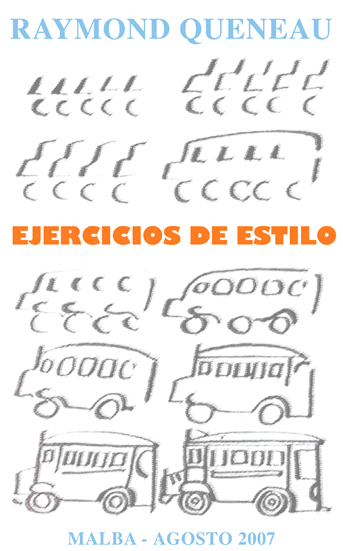In «Exercises in Style» (1947), Raymond Queneau narrates a trivial incident in 99 different ways. It is one of those books that defies classification, a literary work with a strong metaliterary or perhaps «paraliterary» component, as indicated by Antonio Fernández Ferrer in the preface to his excellent translation (Ed. Cátedra, 1993).
«Exercises in Style» is a clear example of the use of literary constraints (writing the same story 99 times) as a creative engine, one of the characteristics of the Oulipo movement, of which Raymond Queneau was one of the founders.
Fernández Ferrer reveals that the origin of «Exercises in Style» is not literary but musical, as it was inspired by Bach’s «The Art of Fugue,» considered a «construction of a work through variations that proliferate infinitely around a rather trivial theme.»
Umberto Eco, who translated «Exercises in Style» into Italian, highlights that Queneau consciously transforms the aesthetic values associated with rhetorical figures in order to achieve his own parodic and playful explorations of language.
As for the author, Raymond Queneau (Le Havre, 1903-1976) studied mathematics, philosophy, and psychology at La Sorbonne. He belonged to the Académie Goncourt and was part of the curious surrealist movement known as Pataphysics. In 1960, he co-founded, alongside François Le Lionnais, a literary and scientific research group called Oulipo (Ouvroir de littérature potentielle, or Workshop of Potential Literature). A lover of mathematics, Queneau attempted to apply arithmetic rules in the construction of his works.
The play was presented as part of the homage to Oulipo organized by MALBA (Museum of Latin American Art of Buenos Aires) and the French Alliance of Buenos Aires in 2007.
Cast: María Comesaña, Federico Buso, Debi de Hasburgo, and Jackie Parisier.
Theater: MALBA and French Alliance of Buenos Aires.

